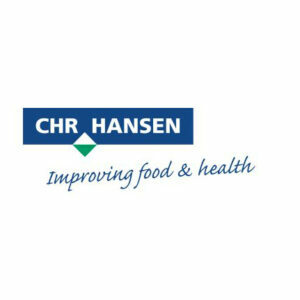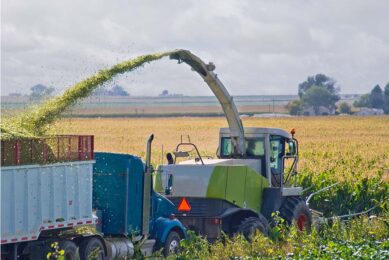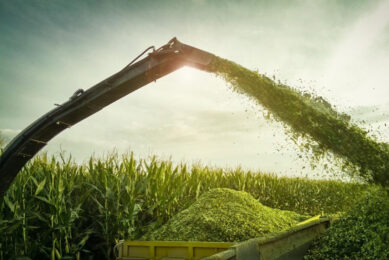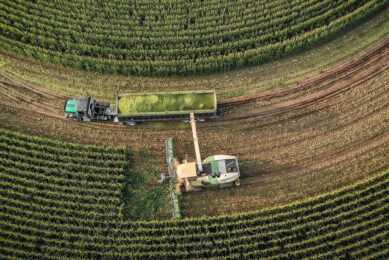Sustainable dairy farming with a return in 1, 2, 3 steps
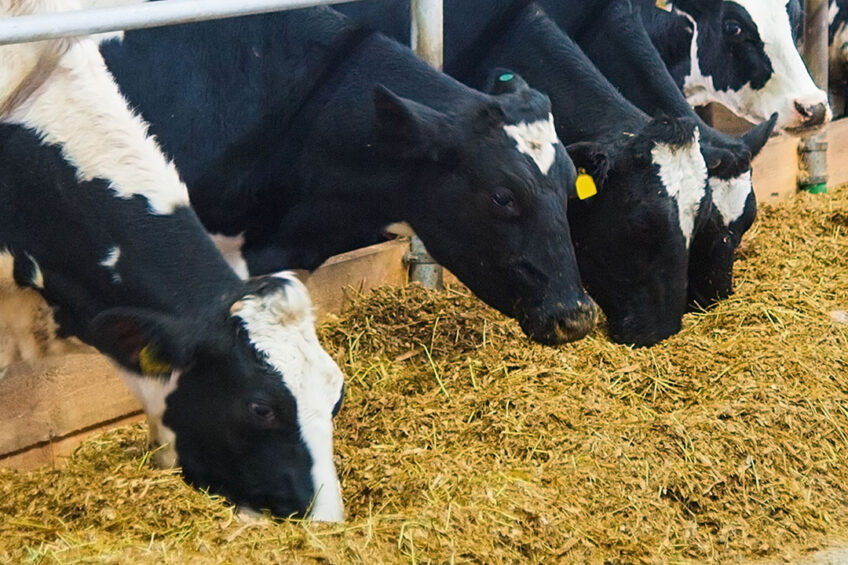
The dairy industry, and in particular dairy farmers, are under increased pressure to reduce the CO2 footprint of their final product, milk. Nevertheless, truly sustainable dairy farming requires a more holistic view of the entire production system and should not just focus on emissions.
In fact, sustainable goals, such as better resource utilisation and animal welfare, can positively impact profitability regardless of a premium price on milk. Often, we look for a magic bullet that will help us to be more sustainable and profitable when in fact, a few adaptations to our day-to-day activities can have a more significant impact.
Did you know?
· Up to 30% of the silage produced at the farm level can be lost. This fact has a direct economic impact when you consider the total cost of silage in the diet and everything related to it (fertiliser, seed, crop protection products, application, harvesting and ensiling). Preventing or at least minimising losses has a direct link to profitability and sustainability, especially when considering better use of resources. Reducing silage losses positively impacts your CO2 footprint balance when you value all of the above.
· Feed efficiency has a direct and measurable impact on your CO2 footprint? We often look at feed efficiency from an economic point of view, and there is nothing wrong with that. Considering ways to improve feed efficiency, especially in times of high feed prices, is a priority. However, feed efficiency gets an extra twist if the new currency moves from Euro to Nitrogen and likely soon CO2. Each feed ingredient has a CO2 cost associated with it, and ultimately, feed efficiency in any diet is a question of resource optimisation.
· Supporting a healthy gut in a dairy cow can improve its overall health and performance. The gastrointestinal tract (GIT), commonly known and referenced as ‘the gut’, has the job of digesting feed and absorbing nutrients, which in turn are used for maintenance, growth and production. The gut is also in constant contact with potentially harmful bacteria and substances, such as mycotoxins, that can compromise gut integrity and affect both nutrient uptake and general health status. Thus, investing in animal health has a positive return, not only because we reduce the number of sick animals but also because we maximise feed utilisation and productivity.
So the main question remaining is: is there a magic bullet that can help us be more profitable and sustainable simultaneously? The answer is NO! However, there are some steps that we can take to prevent or reduce some of the negative impacts mentioned above.
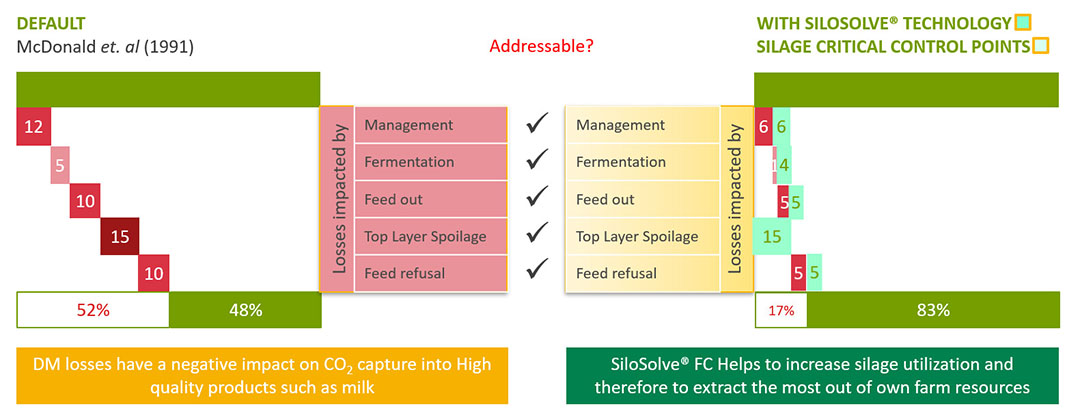
Actions to take now: 1,2, and GO!
Silage production optimisation with proven effects
Feeding animals with uniform, high-quality silage for the entire year is crucial to maximise the efficiency and sustainability of livestock farms. Good silage management practices directly impact reducing the CO2 footprint at the farm level. Top layer spoilage and less optimal feed-out management can reduce silage availability by up to 25%. Just consider whether you could reduce your acreage for forage production by 10-15% by improving silage management and adding an effective silage inoculant to your harvesting routine.
Planning the filling of a silo to achieve the correct daily feed-out rate and properly packing, covering, and sealing the silo to minimise oxygen penetration during the conservation phase will contribute to better forage utilisation. If these management practices are deployed, introducing a reliable silage inoculant during harvesting will help keep spoilage to a minimum and therefore optimise land use.
What an effective silage inoculant can bring, in addition to controlled fermentation, is a positive impact on aerobic stability. Properly managing the face of the silage pile, avoiding excessive exposure to air, and using appropriate machinery for feed-out can minimise losses and maintain silage quality. In addition, undesired microbial activity and compaction issues may be controlled by a silage inoculant that will support the aerobic stability of the front side.
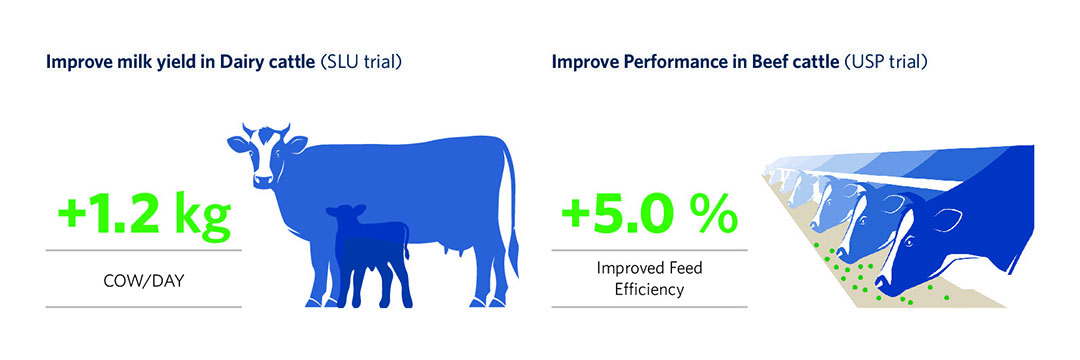
Improved feed efficiency with a twist on gastrointestinal health
In ruminant nutrition, we often use feed additives to improve feed efficiency. However, most of these products have a single mode of action that usually affects rumen function in a positive way. In recent years, new research has shown that some probiotics have a dual function, positively impacting rumen function while supporting gastrointestinal tract health. This is the case for probiotics containing specific strains of Bacillus, also known as direct-fed microbials (DFM).
· Digestibility and performance. Selected strains of Bacillus can produce a wide range of enzymes to promote feed digestibility and improve efficiency in dairy cows. Specific DFMs have been shown to improve the digestibility of different sources of fibre (pasture, silage and hay), starch (sorghum, maize, wheat and barley) and commercial dairy TMR. The improved digestibility translates to more nutrients for milk production, resulting in positive economics for the dairy farmer.
· Intestinal health. Stresses such as heat stress, diet changes, management, pathogen load, and mycotoxins cause the gut lining to become permeable to bacteria, toxins and small particles. This increase in permeability, known as leaky gut, triggers an immune response that consumes the energy that’s available for production. Selected Bacillus strains increase the strength and health of the intestinal barrier, reducing leaky gut and helping the animal to withstand stress while minimising milk loss.
References are available on request from the authors.
A good silage strategy and a healthy gut are ready and easy steps to implement at the farm level. Do not hesitate to contact us to learn more about silage management and/or a healthy gut in ruminants. We look forward to working with you. Contact: DEAIPE@chr-hansen.com
Join 13,000+ subscribers
Subscribe to our newsletter to stay updated about all the need-to-know content in the dairy sector, two times a week.


